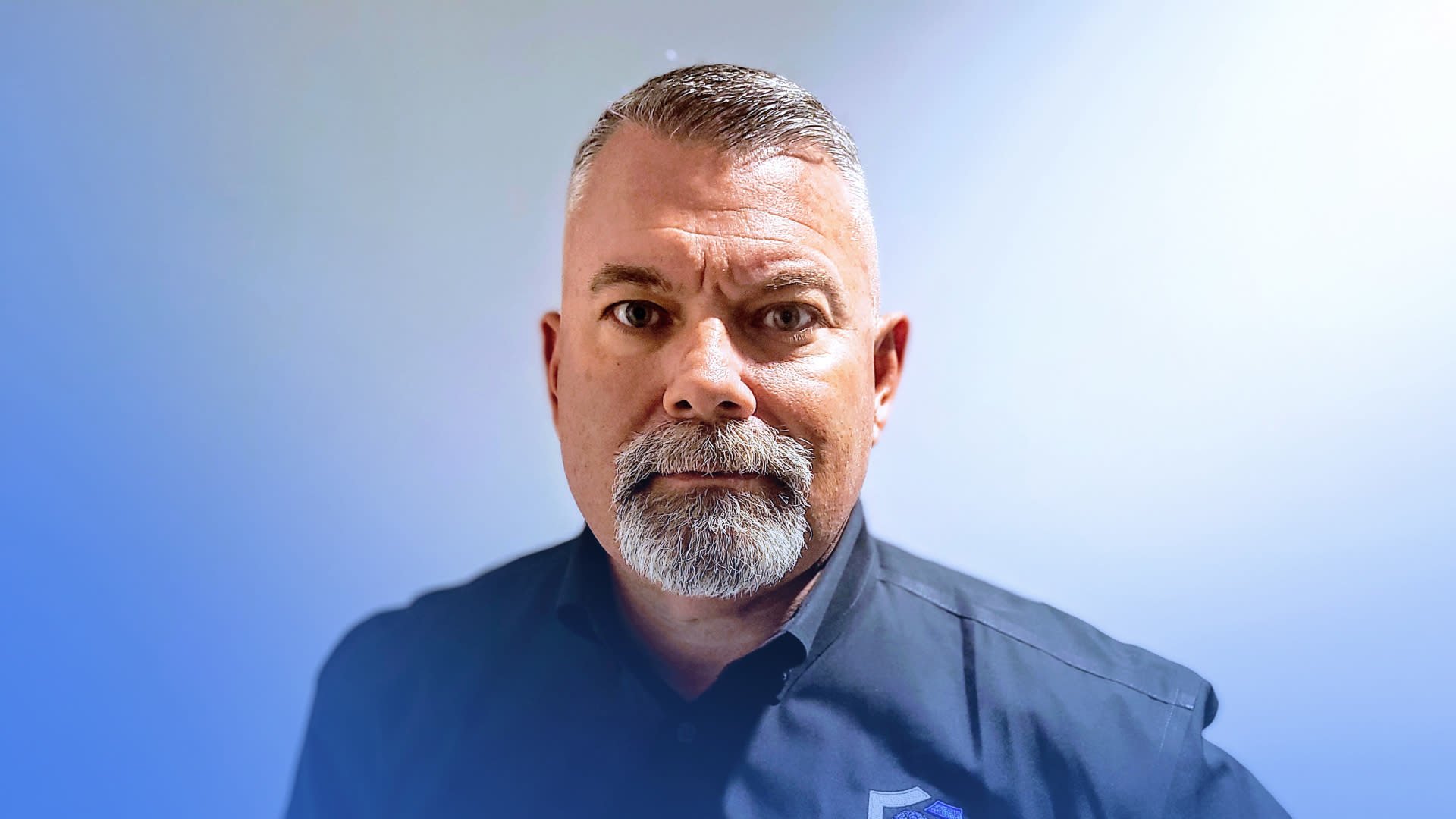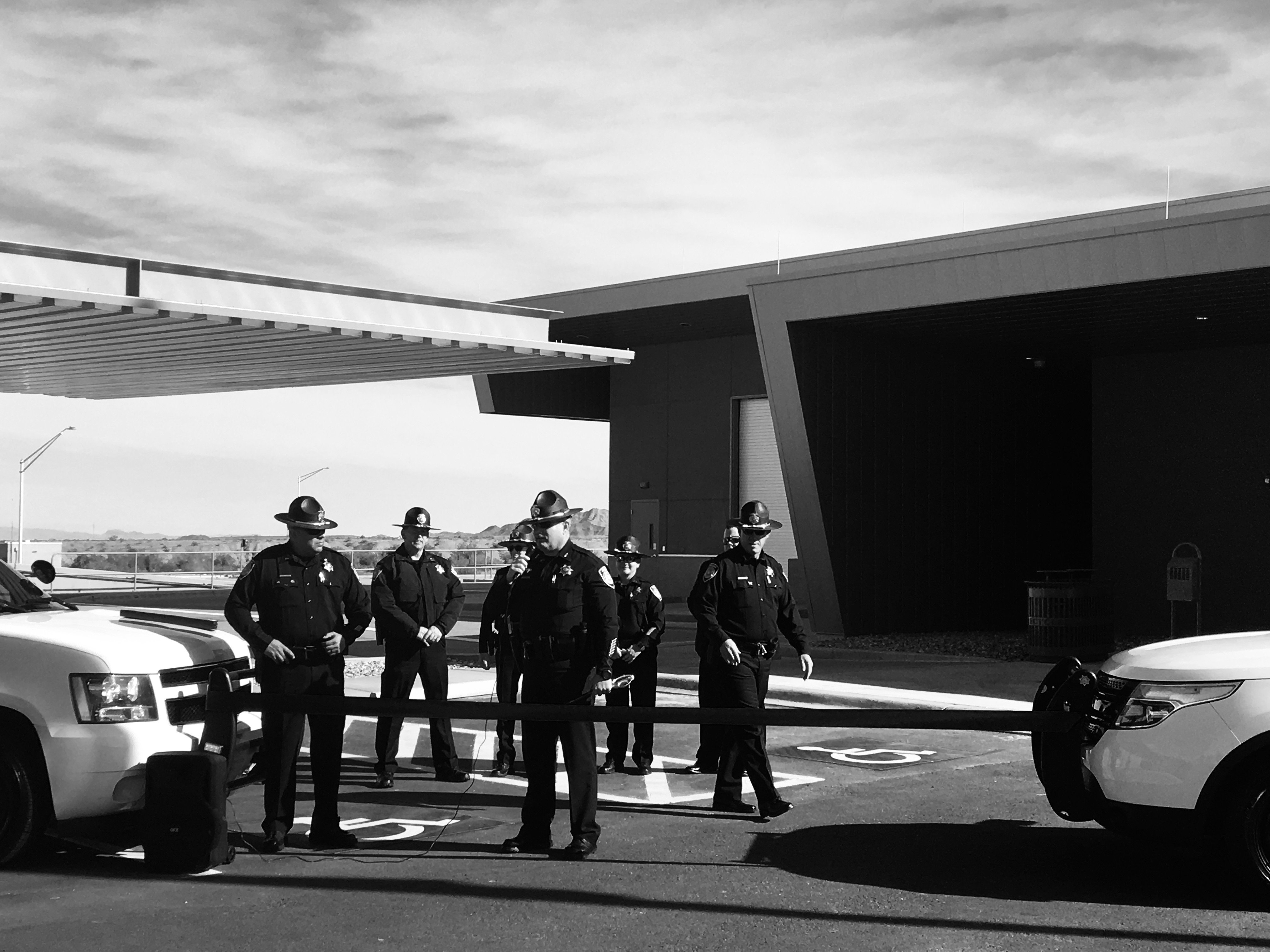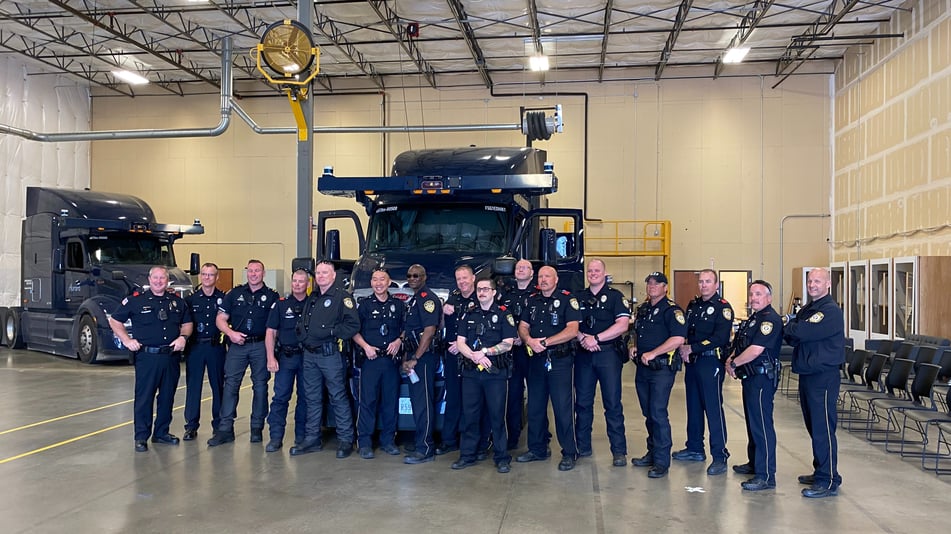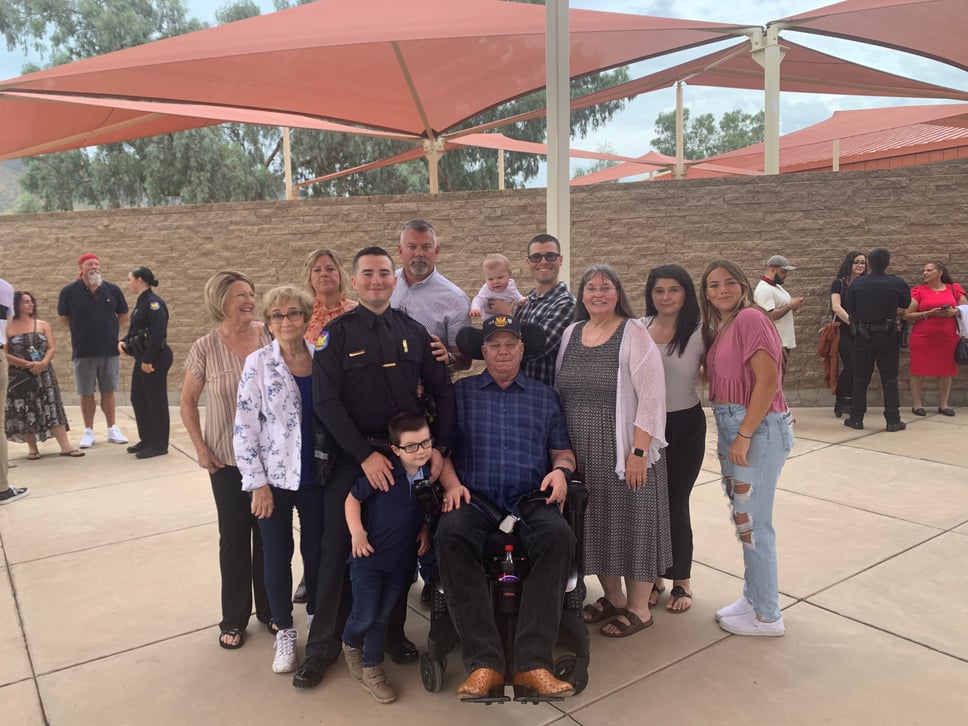Aurora Voices with Gary McCarthy
Meet our team | November 14, 2022 | 3 min. read

Our Aurora Voices series celebrates the people and teams whose unique experiences, backgrounds, and voices bring Aurora’s mission to life.
Meet Gary, Aurora’s Sr. Manager of Law Enforcement Interactions
A vehicle powered by the Aurora Driver will be able to safely navigate the world without a human in the driver’s seat, but what happens when our driverless vehicles interact with their human counterparts, like law enforcement or first responders? In order to launch our autonomous trucking service, Aurora Horizon, it’s not only essential that Aurora Driver-powered vehicles can safely react and respond to emergency vehicles on the road, we also need to ensure that law enforcement understands how to safely interact with self-driving vehicles.
With more than two decades of police experience at municipal and state agencies like the Arizona Department of Public Safety and the Arizona Department of Transportation, Gary helps define how the Aurora Driver will safely and responsibly interact with officers on the road. Read on to see how he thinks about the next phase of law enforcement in the new age of transportation.
Tell us about your role at Aurora.
I’m a liaison between Aurora and the law enforcement community. I work with local, county, and state law enforcement officials and regulators to introduce them to self-driving technology and establish a way for us to work together as autonomous vehicles (AVs) become more prevalent on our roads. In any given week, I’m meeting with officers to discuss the impact of AVs, attending law enforcement conferences, and meeting with road safety groups and organizations to establish standards for this emerging industry.
What is the path that led you to Aurora? Why were you inspired to work with autonomous vehicles and why Aurora?
I was a law enforcement officer for more than 25 years. In that time, I served a variety of functions — I was a patrol officer, a field training officer, and a motorcycle officer, and I spent over 10 years working on fatal accidents. I’ve seen how human error can result in tragedy, and I’m here at Aurora to help make our roads safer today and for the generations to come.
Gary has served in the police force for more than 25 years and today applies his expertise at Aurora. Gary has served in the police force for more than 25 years and today applies his expertise at Aurora.
Gary has served in the police force for more than 25 years and today applies his expertise at Aurora.
As for why I chose to work at Aurora, it’s the team. From the day I joined Aurora’s Government Relations team, we’ve set incredibly ambitious goals to raise awareness around AVs at the municipal, state, and federal levels. We’ve been exceedingly successful because of the diverse expertise and exemplary leadership on our team, and I look forward to seeing what we’ll accomplish next.
How have you seen the industry change since you started working at Aurora?
When I entered the AV space back in 2020, there was hardly any focus on defining law enforcement interactions with self-driving vehicles. Since then, I’ve observed the industry make huge strides in working with state and federal regulators to safely bring this technology to public roads.
For example, the Commercial Vehicle Safety Alliance (CVSA), a nonprofit that focuses on improving commercial motor vehicle safety through guidance and education, recently released a set of standards for inspecting autonomous trucks that include an enhanced 22-step inspection process and a 40-hour training course for motor carrier personnel who will be conducting the inspections. Progress like this is the result of collaboration amongst commercial motor vehicle inspectors, state highway patrols, motor carriers, autonomous truck developers, and government officials. And while this might sound like a standard trucking safety process, it’s not. These standards are raising the bar for safety and, in my opinion, mirror the rigor and detail you would expect in the airline industry.
 Aurora hosted a demonstration and discussion about AVs with officers from the Garland Police Department's Traffic Bureau at our facilities in Dallas.
Aurora hosted a demonstration and discussion about AVs with officers from the Garland Police Department's Traffic Bureau at our facilities in Dallas.
How do you drive impact in your work?
While the self-driving industry is a competitive one, when it comes to safety, collaboration is paramount. I cannot be successful in my work without collaboration, so I make it a point to join police organizations such as the International Association of Chiefs of Police, the National Sheriffs Association, and the Arizona, Texas, and Pennsylvania Chiefs of Police organizations to help establish safety standards for police vehicles. I also work with entities like the CVSA and the Texas Department of Public Safety.
It’s also vital to my role to collaborate with my counterparts at other AV companies. We share a goal to inspire and educate our partners in law enforcement and we are often more successful when we present a united front. As past police officers, we’ve all handled fatal accidents, so we have a shared understanding and vision for the huge impact AVs will have on improving road safety.
What do you do in your spare time?
Time spent outside of work is all about friends and family. My daughter is a travel softball player, so the majority of my time is spent at the ballpark. When I have free time beyond that, I enjoy being outdoors riding motorcycles or hunting.
Delivering the benefits of self-driving technology safely, quickly, and broadly.